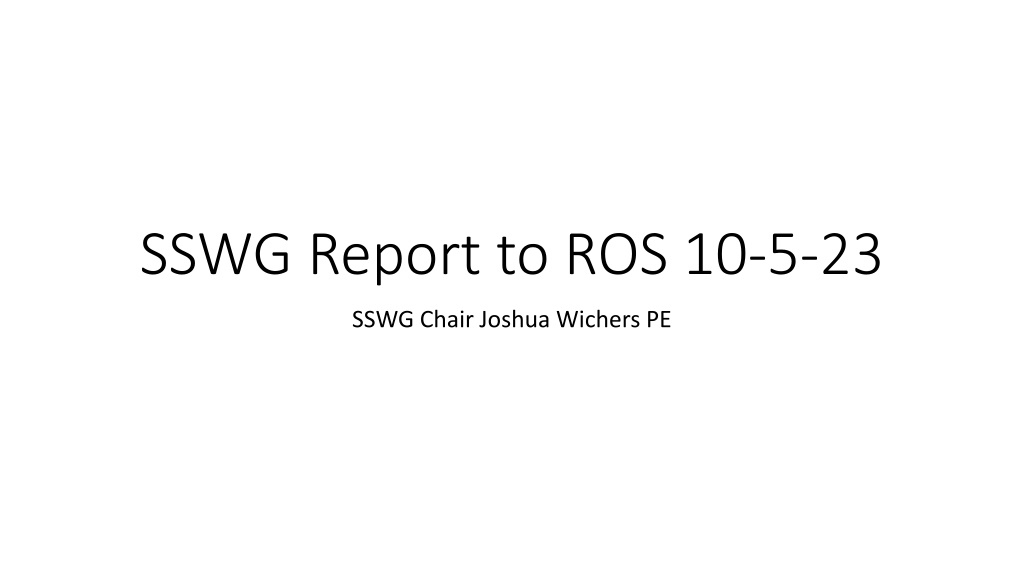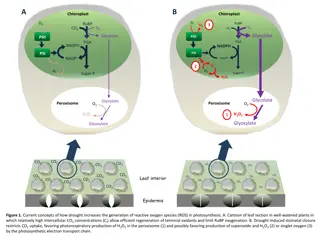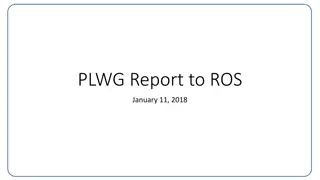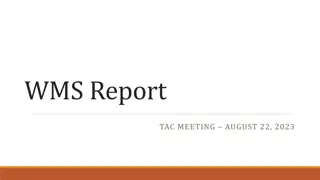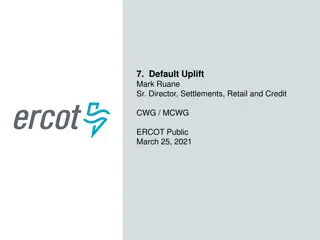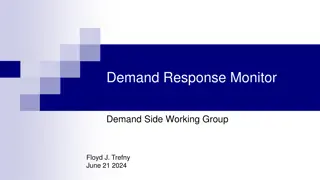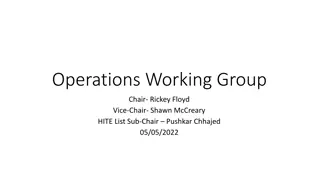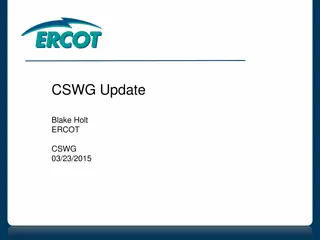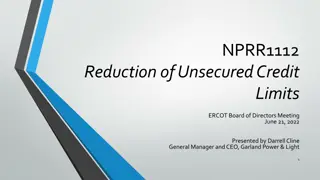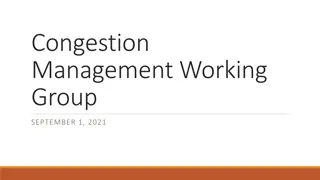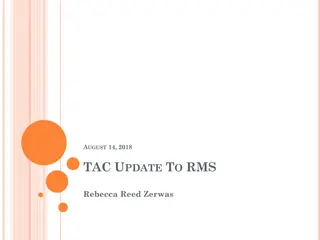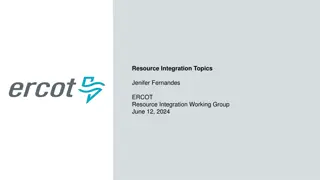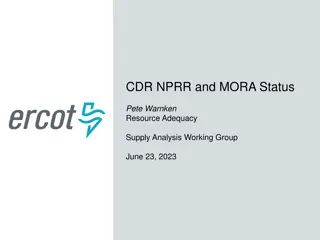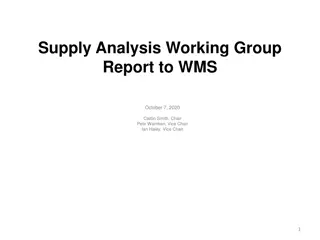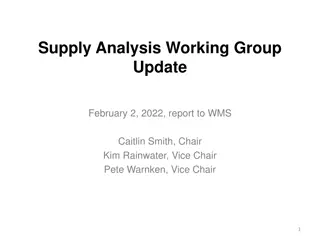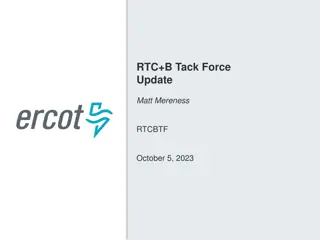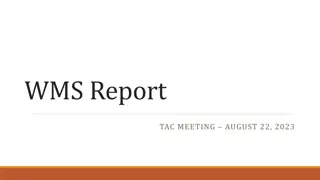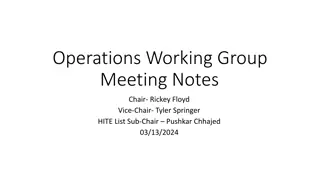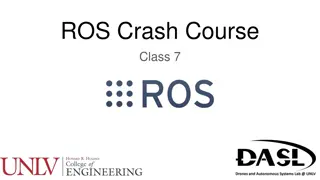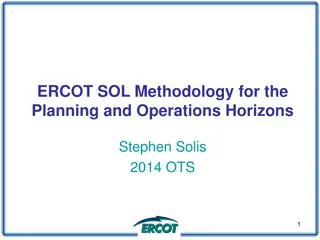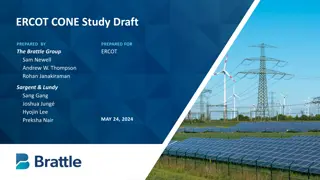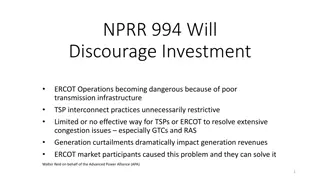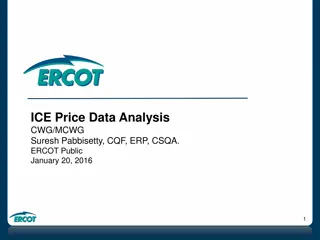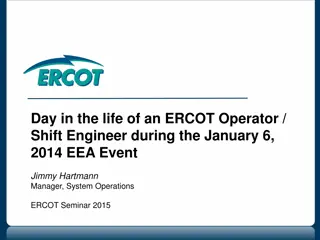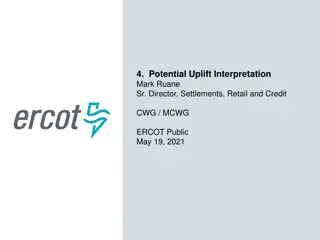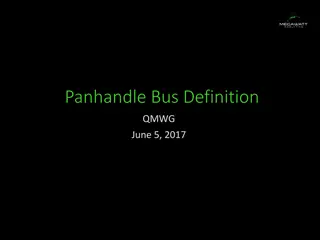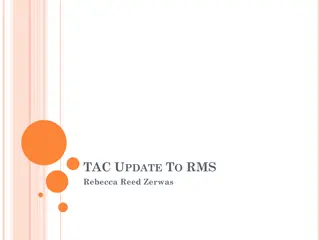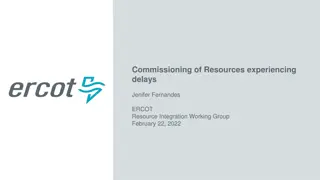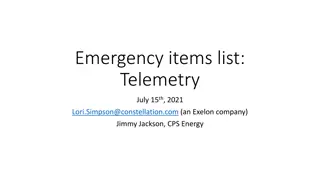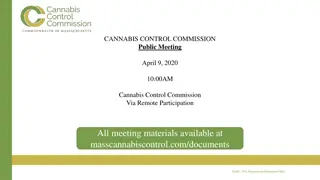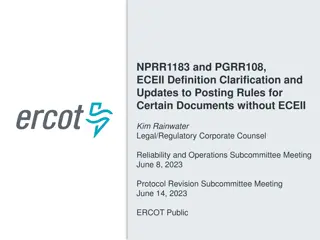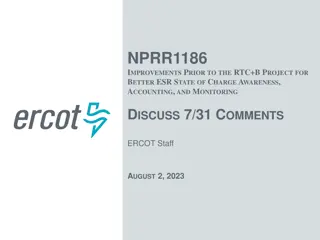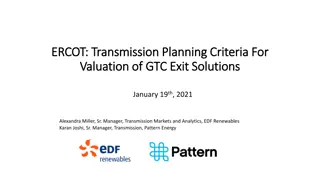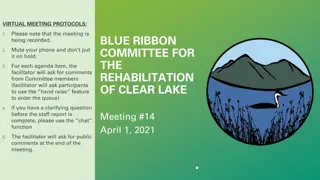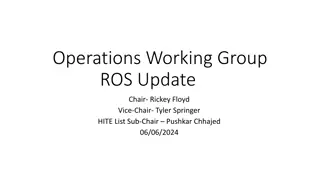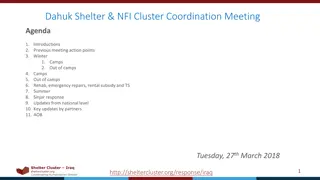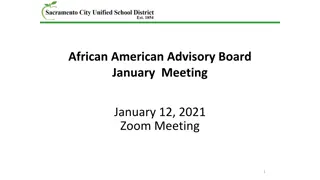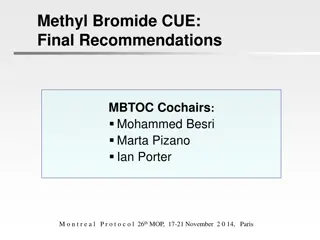ERCOT SSWG Report to ROS Meeting - Updates and Recommendations
Omer Mohammed has transitioned to a new group, prompting William Robertson to take his place as the new Vice Chair in the upcoming SSWG meetings. The October 23SSWG U1 cases and TPIT information will be released soon. The report also addresses the current generation and load status, seeking guidance on incorporating batteries and solar generation effectively into the system.
Download Presentation

Please find below an Image/Link to download the presentation.
The content on the website is provided AS IS for your information and personal use only. It may not be sold, licensed, or shared on other websites without obtaining consent from the author. Download presentation by click this link. If you encounter any issues during the download, it is possible that the publisher has removed the file from their server.
E N D
Presentation Transcript
SSWG Report to ROS 10-5-23 SSWG Chair Joshua Wichers PE
Omer Mohammed has taken a position with another group and will no longer be representing CPS at SSWG. He was the sitting Vice Chair William Robertson from CPS will be taking his place and SSWG agreed that this was acceptable. Ben De Torcy with ONCOR will be taking over as vice chair in 2024 when William Robertson moves to the chair role. The October 23SSWG U1 cases and TPIT are slated to be posted on October 13th, 2023 Omer Mohammed has taken a position with another group and will no longer be representing CPS at SSWG. He was the sitting Vice Chair William Robertson from CPS will be taking his place and SSWG agreed that this was acceptable. Ben De Torcy with ONCOR will be taking over as vice chair in 2024 when William Robertson moves to the chair role.
23SSWG U1 Case Load without Losses 23SSWG U1 Case Load without Losses Highlighted are previous 23SSWG cases in extraordinary dispatch. Red cases are expected to go to step 6.
Units in GW P Q Pgen Pmax Delta Qgen Qmax LFLs Non-Scalable Load Scalable Load Batteries Solar Wind Dispatchable* 4.589 27.17 77.746 1.15 8.715 17.969 0 8.757 25.357 40.569 53.731 8.757 5.3538 27.076 2.444 0.066 2.978 0.293 4.035 10.123 14.105 20.0032 13.493 51.287 0.332594 * C, D, H, N Total Load 109.446 27.821 A few observations 24SUM1 (24 Summer Peak) load is near 110 GW (ERCOT System peak currently around 85 GW. LFLs connected by next summer will total near 4.6 GW. Batteries available are near 8.8 GW, as of now SSWG cannot use this generation. We would like some guidance on how we can incorporate these. Solar generation is 20 GW. We only have 2.4 GW of dispatchable. We cannot study sensitivity cases where the load is still high and solar drops off. Recommendations???
4.3.3.1 Extraordinary Dispatch Conditions On occasion, the total load plus the spinning reserve indicated above can exceed the amount of available generation due to load forecasts. SSWG Cases typically model load at individual coincident TSP peaks instead of at the ERCOT coincident system peak. When such a condition is encountered in future cases, ERCOT may increase generation resources by taking the indicated action, or adding generation, in the following order: 1. 2. 3. 4. Ignore spinning reserve. Increase NOIE generation with prior NOIE consent. DC ties dispatched to increase transfers into ERCOT to the full capacity of the DC ties. Units that have changed their status to mothballed units within the last 18 months and that have not announced their return to service. The dispatch methodology for this procedure is detailed below. Scale transmission level wind generation dispatch up to 50% of capability. Add units with interconnection agreements, but do not meet all of the requirements for inclusion defined in the Planning Guide. Units that have changed their status to mothballed over 18 months ago and have not announced their return to service. The dispatch methodology for this procedure is detailed below. Add publicly announced plants without interconnection agreements. Dispatch SODG natural gas and diesel units up to their full capacity. 10. Dispatch units that are solely for black start. 11. Scale wind generation dispatch up to 100% of capability 12. Add generation resources to the 345 kV transmission system near the sites of existing or retired units. 5. 6. 7. 8. 9. ERCOT shall post the extraordinary dispatch details used in each case to the MIS website.
4.3.3.1 Extraordinary Dispatch Conditions On occasion, the total load plus the spinning reserve indicated above can exceed the amount of available generation due to load forecasts. SSWG Cases typically model load at individual coincident TSP peaks instead of at the ERCOT coincident system peak. When such a condition is encountered in future cases, ERCOT may increase generation resources by taking the indicated action, or adding generation, in the following order: 1. 2. 3. 4. Ignore spinning reserve. Increase NOIE generation with prior NOIE consent. DC ties dispatched to increase transfers into ERCOT to the full capacity of the DC ties. Units that have changed their status to mothballed units within the last 18 months and that have not announced their return to service. The dispatch methodology for this procedure is detailed below. Scale transmission level wind generation dispatch up to 50% of capability. Add units with interconnection agreements, but do not meet all of the requirements for inclusion defined in the Planning Guide. Units that have changed their status to mothballed over 18 months ago and have not announced their return to service. The dispatch methodology for this procedure is detailed below. Add publicly announced plants without interconnection agreements. Dispatch SODG natural gas and diesel units up to their full capacity. 10. Dispatch units that are solely for black start. 11. Scale wind generation dispatch up to 100% of capability 12. Add generation resources to the 345 kV transmission system near the sites of existing or retired units. 5. 6. 7. 8. 9. ERCOT shall post the extraordinary dispatch details used in each case to the MIS website. We started discussing re organizing the Extraordinaire Dispatch steps. A few ideas: Dispatch Diesel and Gas SODGs prior to increasing wind beyond the CDR levels Reduce LFLs prior to increasing wind beyond CDR levels Dispatch batteries (currently offline in all cases) prior to increasing wind beyond the CDR levels. We felt like some guidance from Planners end users of the SSWG cases would be beneficial.
Order of Targets Target 1 Target 2 Target 3 Target 4 Target 5 Target 6 Target 7 Target 8 Target 9 Title of Target Zero CNTB Errors Iterating PSSE Case Fixed-slope or Full Newton Solving PSSE Case Fixed-slope and Full Newton Solving PSSE Case Fixed-slope Solving PSSE Case with 1 iteration Fixed-slope Solving PSSE Case with 1 iteration, 5 times in a row P0 PSSE case with zero thermal violations* P0 PSSE case with zero voltage violations* Run N-1 Contingencies Minimum Case Quality of Posted Cases Ideal Case Quality of Posted Cases 28SUM1, 29SUM1, 30SUM1 27HRML 28SUM1, 29SUM1, 30SUM1 25SUM1, 26SUM1 , 27SUM1 23FAL1 & 2, 24WIN1 &2, 24SPG1 & 2, 24SUM1 & 2, 24FAL1 & 2, 25WIN1 & 2 Target 10 Target 11 Target 12 Target 13 Target 14 Target 15 Target 16 * Excluding issues that cannot be solved without additional model changes The focus will be on BES equipment (100+ kV) N-1 convergent (P1, P2.1 & P7) P1 PSSE case with zero thermal violations* P1 PSSE case with zero voltage violations* N-1 PSSE case with zero thermal violations* N-1 PSSE case with zero voltage violations* Full NERC category PSSE case with zero thermal violations* Full NERC category PSSE case with zero voltage violations* 25SUM1, 26SUM1 , 27SUM1 27MIN These are the Case Quality Targets that we are discussing and planning to use moving forward. Ideally, we will post this information with the cases like the other reports. We are still discussing these targets and shifting some around.
